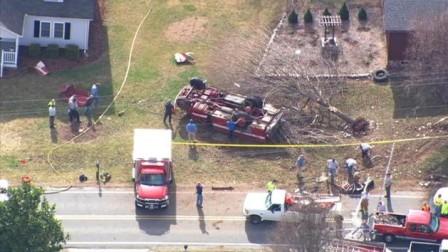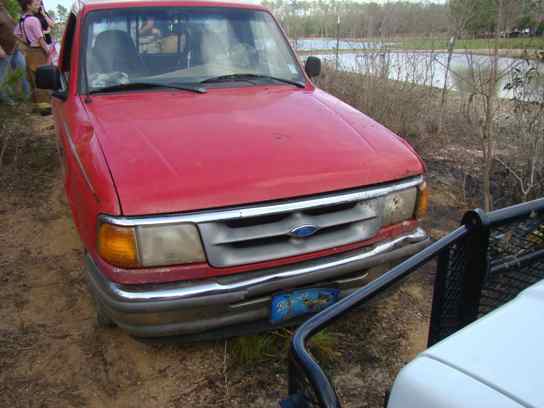Below is a guest post written by Mike DeGrosky, the CEO of Guidance Group, Inc.
================================================
I want to thank Bill for allowing me to blog as a guest at Wildfire Today.
In 2010, my company, Guidance Group, Inc. coordinated the work of the Secretary of Agriculture’s Independent Large Cost Fire Review Panel, which reviewed the six fiscal year 2009 wildland fires whose suppression costs exceeded $10 million. The six fires included the Backbone, Big Meadow, Knight, La Brea, and Station fires in California and the Williams Creek fire in Oregon.
Phil Schaenman (of TriData Corporation) and I presented the Panel’s final report in a briefing to the U.S. Forest Service on August 13, 2010 followed by a briefing with the Secretary of Agriculture’s Chief of Staff later that week. Apparently, sometime after these briefings, but before the Departments of Agriculture and Interior had completed their review and transmitted the report to Congress, someone, who remains unknown, leaked the report. The report found its way to a group of Forest Service retirees as well as Los Angeles Times reporter Paul Pringle, both who were critics of the Angeles National Forest’s handling of the Station Fire.
 When excerpts from the report began showing up in LA Times articles critical of the Forest Service and in Congressional panel hearings, a commenter on Wildfire Today accused me of leaking our own report. Not only was this accusation false, this person offered neither justification for their accusation or evidence to support it. In fact, it would not have been in our interest to leak the report and endanger our reputations and working relationship with the Forest Service, but you never know why people get the ideas they do. At the time, in deference to the Forest Service and their review process, I felt it best to say little. However, now that the report is out in the public domain, I would like to clear the air.
When excerpts from the report began showing up in LA Times articles critical of the Forest Service and in Congressional panel hearings, a commenter on Wildfire Today accused me of leaking our own report. Not only was this accusation false, this person offered neither justification for their accusation or evidence to support it. In fact, it would not have been in our interest to leak the report and endanger our reputations and working relationship with the Forest Service, but you never know why people get the ideas they do. At the time, in deference to the Forest Service and their review process, I felt it best to say little. However, now that the report is out in the public domain, I would like to clear the air.
In reality, we first became aware that the report had found its way outside agency circles in early October, when I received a call from a member of the Forest Service retirees’ group challenging the Angeles Forest’s handling of the Station Fire. The caller complimented our work, commended the report, and asked me to verify its authenticity. When I enquired as to how he had come to be in possession of the report, he told me that the group had received the report “from a contractor’s association.” I can only speculate as to how it found its way to Paul Pringle at the LA Times.
It is interesting to note that Mr. Pringle never contacted either the panelists or I. I would have loved the opportunity to help him put his story in context. Interestingly, the members of Congress who conducted panel hearings on the Station Fire in October never contacted us either, nor have the various organizations investigating the Forest Service’s action regarding the Station Fire. That is, in part, my purpose for my entry on Bill’s blog. Those who want to understand how the 2009 Large Fire Cost Review does (and does not) relate to the Station Fire need to know a few things that have gotten lost as the controversy took on a life of its own..
First, having the report in the public sphere was not troubling to us. We are proud of our work and do not fear public scrutiny of it. However, a few people focused on a single paragraph taken from a six-page section discussing the Station Fire. Wanting it to support their point of view, they stretched a few phrases beyond their intended purpose and presented these passages outside the context in which the Panel made them. For example, the Panel’s findings included the following:
Incident Management – The Station fire represented a very large, complex incident, in rugged terrain, involving multiple jurisdictions at the edge of the City of Los Angeles. Fire personnel faced extraordinary challenges. However, the agency personnel, including agency administrators who were actively engaged, handled the situation as well as one might expect given the circumstances. The fact that the IMT came from southern California and had experience with this type of high profile fire proved advantageous” (p. 26).
and:
Initial Response – Controversy continues over whether Forest personnel could have stopped the fire on the morning of August 27 (day 2). Critics claim that if the Forest had airtankers and heavy helicopters on station over the incident at first light, they may have stopped the fire’s spread. If true, more than $90M in cost could have been avoided. However, the Forest Service, Los Angeles County, and CAL FIRE jointly reviewed the initial and extended attack. Their report, issued on November 13, 2009, found that the initial attack ICs acted appropriately and made prudent decisions regarding the safety of firefighters, including those involved in air operations. Further, the report determined that aggressive air operations in the early daylight hours of day 2, without necessary ground support, would not have been effective. The matter remains under investigation and, therefore, beyond the scope of this Panels’ review” (p. 26).
In short, the Panel was largely complimentary of the Forest Service’s incident management under nightmare conditions and, more importantly, the Large Fire Cost Review for FY2009 purposefully avoided the initial or extended attack of the Station Fire. However, these facts remained largely unreported.
Unfortunately, the Panel’s report included an unintended choice of words, causing confusion. Citing factors that increased fire costs, in referencing troubles with ordering federal resources, the report described how, in early 2009, the Regional Forester issued a letter providing budget guidance for the region’s fire preparedness funds. In the course of our fieldwork, it became obvious that field personnel interpreted the letter to mean that the Forests should order Forest Service personnel and equipment before ordering state or local resources; and that this interpretation had delayed, on occasion, the arrival of critical resources. As an example, the report recounted a situation in which the nearby Morris fire released a strike team of CAL FIRE engines who returned to San Diego while an order for a Federal strike team of engines for the Station fire remained unfilled.
Unfortunately, we inadvertently included the word “initially” in the description of events, leading some to believe that this example had bearing on the controversy concerning the extended attack of the Station Fire, despite the Panel’s statement that the initial attack of the Station Fire was beyond its scope. Some even called it the “smoking gun” that they had been seeking.
In reality, this strike team (and another that was reassigned) were released on August 29th, three days after the start of the Station Fire, not during initial attack. However, it is important to note that, way back in October, as the Paul Pringle referenced report passages in the LA times and the report came up in Congressional panel hearings, we acknowledged to the Forest Service that this section of text described resource orders made early in the fire, but not during initial or extended attack. I still contend that other text in the Station Fire section of the report made that context clear. Inclusion of the word “initially” was inadvertent, and the Panel was aware that the situation occurred days after the fire’s start.
I am pleased that the report is finally out in the public eye, where people can read it for themselves rather than speculating on its contents or allowing others to interpret it for them. I hope that these remarks clarify the relationship between the Large Fire Cost Review for FY2009 and the controversy surrounding the Station Fire.




